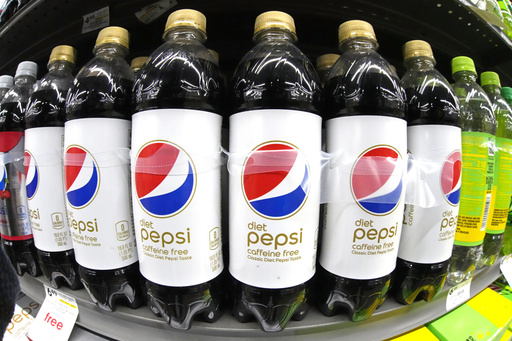PepsiCo reported higher-than-expected earnings in the second quarter but customer demand for its snacks and drinks continued to slip.
North American demand for Pepsi’s Frito-Lay snacks was “subdued” during the quarter, and sales volumes dropped 4%. Chairman and CEO Ramon Laguarta said Thursday that the company plans to amp up deals and advertising in the second half of this year.
High prices are a big reason for the lower sales. The average U.S. price for a 16-ounce bag of potato chips hit $6.63 this year, according to data from the U.S. Federal Reserve. PepsiCo said Thursday that customers have grown more value-conscious and are shifting to less expensive store brands or shopping at discount stores.
The company said it hopes to to lure customers back with deals and more visible in-store promotions. It also hopes to accelerate sales of its healthier brands — like PopCorners, Smartfood and SunChips — which have been growing at a faster pace than the rest of its portfolio.
PepsiCo’s income rose 12% to $3 billion, or an adjusted $2.28 per share, for the April-June period. Wall Street had expected earnings of $2.16 per share. The company said its continuing drive to operate more efficiently — including reducing waste and adding more automation to its plants — boosted earnings.
Revenue grew less than 1% to $22.5 billion. That was slightly lower than the $22.59 analysts forecast
Organic revenue — which is adjusted for foreign currency exchanges and the impact of product acquisitions or divestments — rose 1.9% for the quarter. PepsiCo said it now expects 4% organic revenue growth for the full year; previously, the company had forecast organic revenue growth of “at least” 4%.
Shares slipped more than 2% before the opening bell and shares of Coca-Cola and Keurig Dr Pepper fell as well.
Globally, sales volumes fell 3% in the second quarter. It was the company’s eighth straight quarter of falling volumes. PepsiCo has said some of that volume decline is strategic, since it has been shrinking package sizes. But it has also seen U.S. customers buying fewer snacks or switching to store brands in the face of its continued price hikes.
PepsiCo, based in Purchase, New York, has leaned heavily into price increases over the past two years as its costs for ingredients and packaging rose.
The fourth quarter of 2023 was the company’s eighth straight quarter of double-digit percentage price increases and it hiked prices 5% to start the year, and another 5% in the just-completed quarter.
PepsiCo’s Quaker Foods brand also struggled in the second quarter as it continued to recover from a product recall earlier this year. Quaker Foods revenue fell 18% in the April-June period.
Source: post





